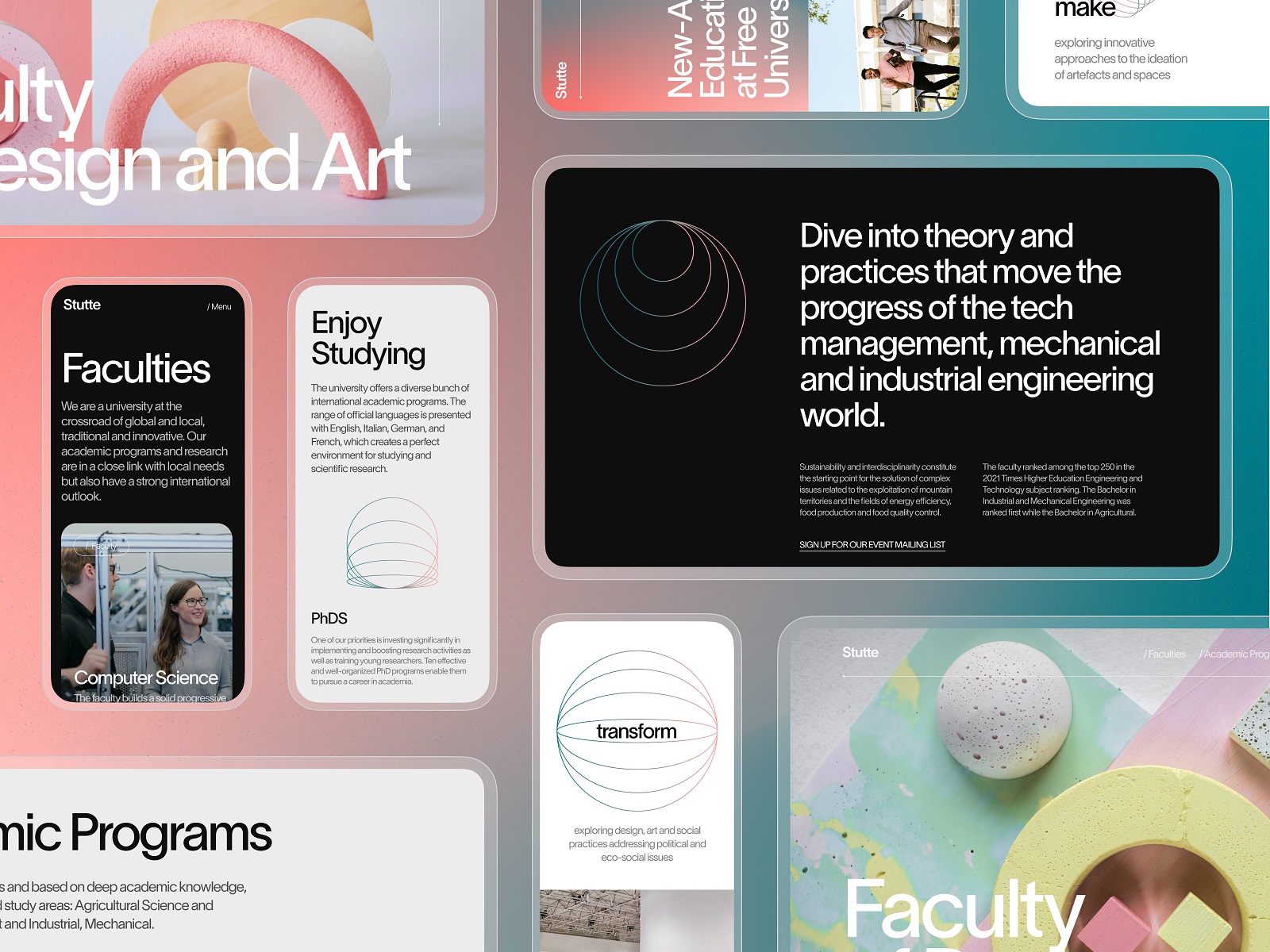Why Responsive Website Design is Essential for Today's Digital Market
Why Responsive Website Design is Essential for Today's Digital Market
Blog Article
The Ultimate Guide to Modern Internet Site Design Trends
In the ever-evolving digital landscape, contemporary internet site layout patterns play a vital duty fit individual experience and interaction. From the rise of minimal layout concepts that focus on simpleness to the effect of bold typography in specifying brand name identification, each component adds to a cohesive on-line visibility. The emphasis on mobile-first and responsive techniques, alongside cutting-edge microinteractions, even more improves functionality. Additionally, the growing emphasis on lasting web design practices shows a commitment to environmental obligation. These fads jointly increase essential questions regarding the future of efficient internet layout and what it implies for companies and consumers alike.
Minimalist Design Concepts
Minimal design principles emphasize the idea that much less is a lot more, promoting for simpleness and functionality in visual communication. This approach remove unneeded aspects, focusing instead on important components that share the designated message properly. By prioritizing clarity, minimal design improves customer experience, permitting visitors to browse sites effortlessly.
Core tenets of minimalist style include the usage of adequate white space, which develops a feeling of equilibrium and organization. This unfavorable space not just routes the viewer's attention to crucial elements yet also fosters a soothing visual atmosphere. Additionally, a minimal shade palette is frequently utilized, using single plans or soft tones to maintain visual cohesion and prevent frustrating the customer.
Typography plays an important duty in minimal layout, where clear font styles are chosen for their simplicity and performance in communicating material. Graphics and pictures are conserved, making sure that they serve an objective instead of distract from the general message. Ultimately, minimal design concepts grow a focused setting that encourages customers to involve with the web content, enhancing the general effectiveness of contemporary site layout. This fad reflects an expanding recognition for thoughtful, user-centric aesthetics in electronic rooms.
Bold Typography Choices
Welcoming vibrant typography options has ended up being a specifying feature of modern-day internet site design, as it efficiently captures focus and communicates solid messaging. Designers are progressively utilizing typography not merely as a functional aspect however as a crucial visual part that enhances the total visual and individual experience.

In addition, the association of bold typography with minimal design concepts enables striking contrasts, improving readability while preserving aesthetic charm. Making use of whitespace around strong text better highlights its value, making sure that the message resonates with the target market.
As digital landscapes come to be more affordable, leveraging bold typography makes it possible for brands to separate themselves and leave a long-term perception. The cautious option of fonts and their application can evoke feelings, develop tone, and drive activity, making bold typography an indispensable device in modern-day web site layout. Eventually, it is a powerful way to enhance narration and guarantee that crucial messages are not only seen however also really felt.
Receptive and Mobile-first Design
Receptive and mobile-first layout has arised as an essential concept in modern site growth, showing the increasing reliance on mobile gadgets for accessing on the internet web content. As individual behavior changes in the direction of mobile surfing, developers must focus on producing experiences that adjust flawlessly across different screen dimensions and resolutions.
A responsive design makes sure that a website instantly changes its format, pictures, and performance based on the device being used. This approach boosts user experience by providing consistent navigating and readability, irrespective of whether the visitor is on a mobile phone, tablet, or desktop computer computer system. Mobile-first style advocates for creating websites at first for smaller sized displays, subsequently scaling up to larger screens. This approach encourages a much more structured and efficient style process, concentrating on important material and performance first.
Implementing mobile-first and responsive concepts not only provides to individual preferences however likewise aligns with search engine optimization (SEARCH ENGINE OPTIMIZATION) techniques. Major search engines, like Google, prioritize mobile-friendly web sites in their positions, making it crucial for organizations to adopt these layout approaches. In a competitive digital landscape, accepting mobile-first and receptive style is not simply an option; it is essential for making certain availability and engagement with a diverse target market.
Engaging Microinteractions
Microinteractions play a critical duty in enhancing customer engagement and overall internet site experience, especially in the context of mobile-first and receptive style. These refined layout elements offer instant feedback to customers, making interactions extra user-friendly and satisfying. Examples include switch animations, notice blog notifies, and packing indicators, which not just guide individuals but likewise produce a sense of connection with the interface.
Incorporating engaging microinteractions can considerably boost use by reducing cognitive tons. When individuals obtain aesthetic or acoustic feedback upon executing actions, such as clicking a button or sending a kind, they feel more confident in their options. This cultivates a smoother navigating experience, ultimately enhancing individual retention.

As website design trends remain to progress, the value of microinteractions can not be overemphasized. They act as the subtle yet effective touchpoints that transform normal interactions right into phenomenal experiences, consequently elevating the general effectiveness of modern web style.
Lasting Website Design Practices
Lasting internet layout techniques are coming to be significantly crucial as the digital landscape expands and environmental concerns rise. Developers and developers are identifying their duty to produce internet sites that not just serve customer needs however additionally reduce ecological influence. This method encompasses numerous vital approaches.
To start with, enhancing power consumption is paramount. Web sites should be designed to load rapidly and efficiently, which lowers web server power use and improves individual experience. Strategies such as picture compression, lessening HTTP demands, and using modern coding methods contribute substantially to this goal.
Second of all, choosing green holding carriers is important - website design. Lots of organizing business are currently powered by renewable resource sources, allowing sites to operate in a much more sustainable fashion. This selection reflects a commitment to decreasing carbon impacts
Additionally, embracing a minimal style can improve sustainability. Less components on a page lead to my website much less data transfer, which not only accelerates packing times however additionally saves sources.
Lastly, promoting electronic ease of access guarantees that websites reach a larger target market without unneeded bloat, straightening customer experience with environmental duty. By integrating these lasting methods, web designers click to read can add positively to both individual involvement and the world's well-being.
Conclusion
In recap, modern site layout patterns emphasize the combination of minimalist principles, vibrant typography, and receptive style to improve user experience. Adopting these patterns is important for developing impactful digital experiences that resonate with users in a significantly competitive on the internet landscape.
In the ever-evolving electronic landscape, modern-day internet site style fads play a vital duty in shaping customer experience and interaction. By focusing on clearness, minimalist style improves customer experience, allowing visitors to browse sites easily.
Eventually, minimal design concepts cultivate a concentrated atmosphere that motivates individuals to involve with the material, improving the total effectiveness of contemporary site style.Microinteractions play an essential role in boosting customer involvement and overall site experience, especially in the context of mobile-first and receptive style.In summary, modern site style patterns emphasize the combination of minimalist concepts, bold typography, and receptive design to boost user experience.
Report this page